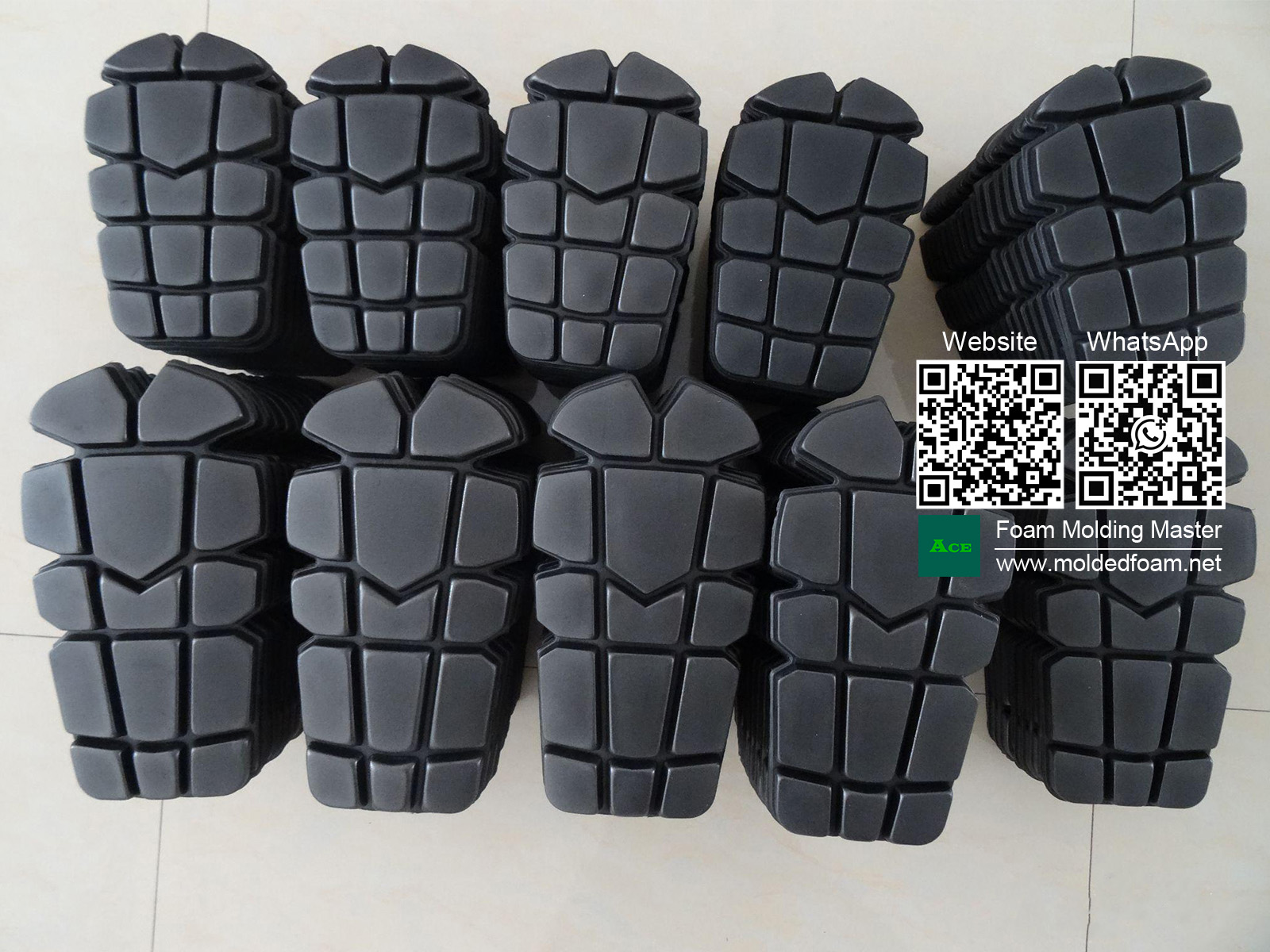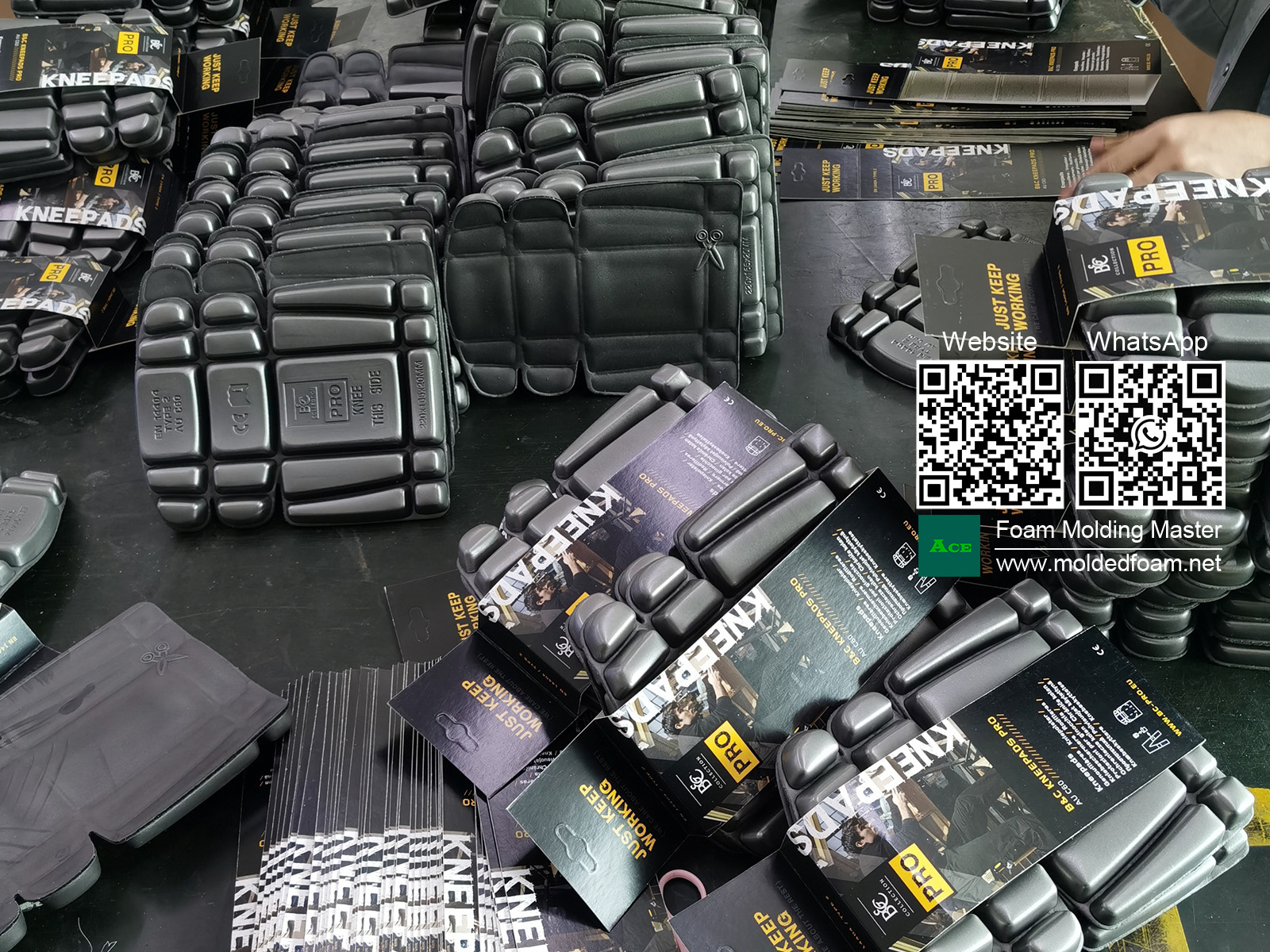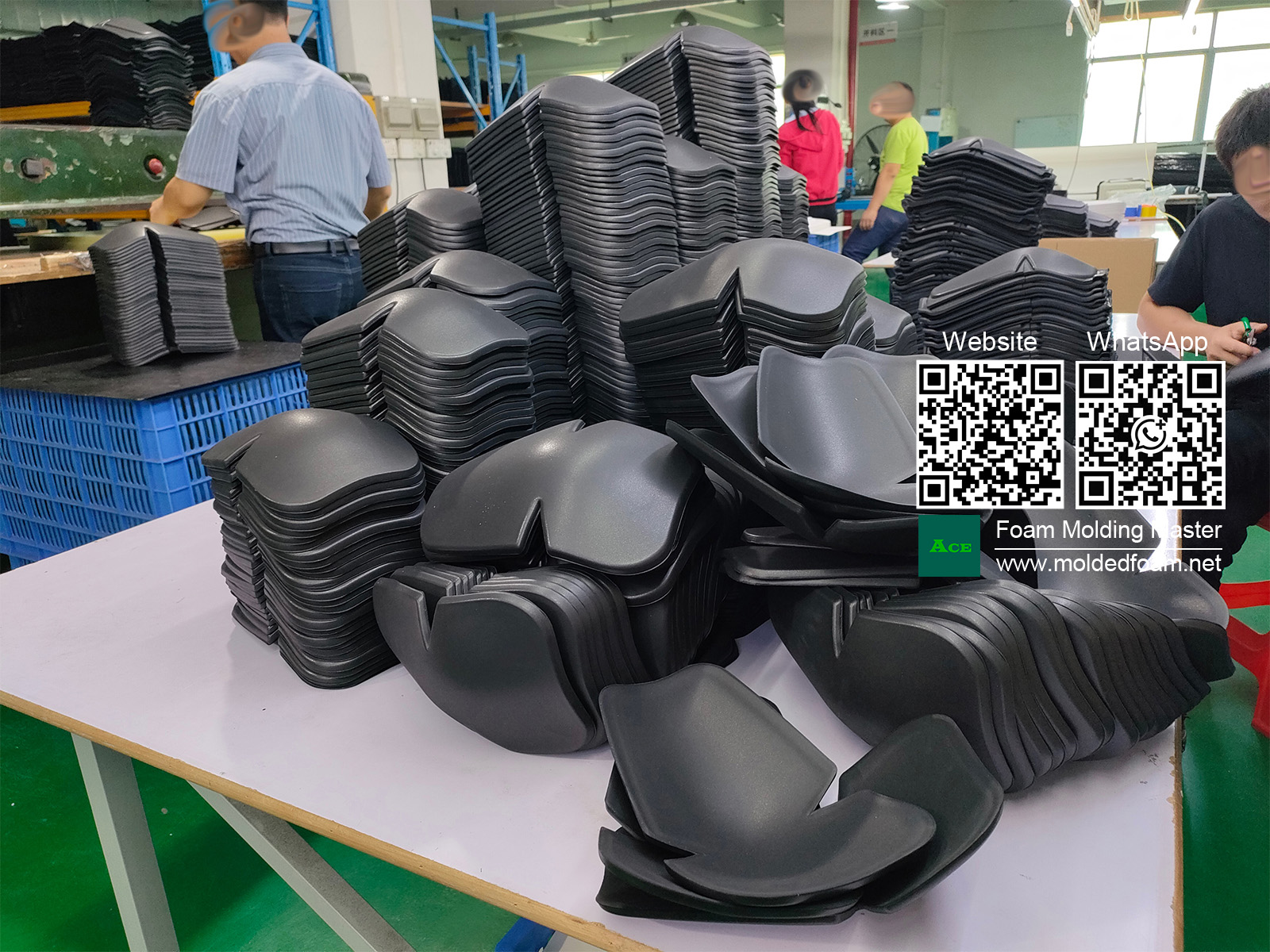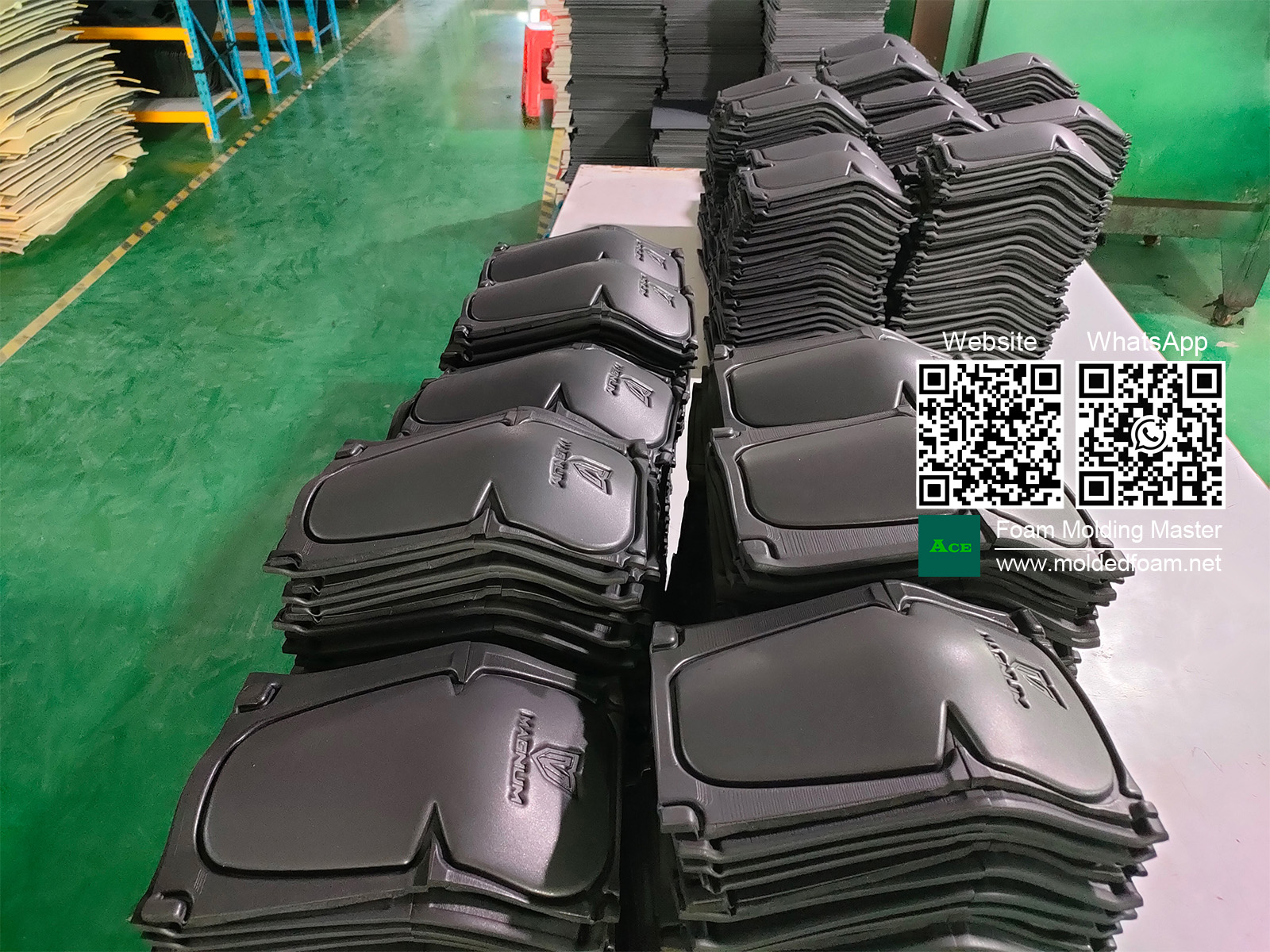how to design knee pad inserts
Designing a knee pad insert requires
considering a few key factors, such as comfort, protection, durability, and the
specific task for which the knee pad will be used. Here’s a step-by-step guide
to designing an effective knee pad insert:
1. Identify the Purpose & Intended
Use

-
Light-duty use: Gardening, light
maintenance, or casual kneeling.
-
Heavy-duty use: Construction,
warehouse work, plumbing, tactical/military, or long-term kneeling.
-
Flexibility: Consider if the insert
needs to move with the knee for certain activities, or if it will remain
stationary for constant impact protection.
Understanding the activity will guide your
choice of materials and design specifics.
2. Choose the Material(s)
The material plays a critical role in how
the knee pad insert performs. Here are some common materials and their
benefits:

-
Foam (EVA, PU): Lightweight,
comfortable, and ideal for light-duty tasks. It’s affordable and often
used in casual kneeling pads.
-
Gel: Provides excellent shock
absorption, ideal for extended periods of kneeling. Often layered with
foam for added comfort.
-
High-Density Foam (Closed-Cell):
Offers medium to high impact resistance, used for construction or
heavy-duty tasks.
-
Memory Foam: Offers moldability and
comfort, useful for ergonomic inserts. Good for long-term comfort.
-
Molded Plastic or Rubber: Provides
high impact protection, ideal for rough environments, such as construction
or tactical use.
-
Ballistic Nylon (for outer casing):
If you’re designing a full knee pad with inserts, ballistic nylon or other
durable fabrics may be used for outer protection.
Tip: For a
layered design, use high-density foam for the main body of the insert, with a
gel or memory foam layer on top for comfort.
3. Determine the Insert Shape &
Design
The shape of the knee pad insert needs to
be both functional and ergonomic. Consider the following:

-
Flat vs. Contoured:
-
Flat Inserts: Easier to make and
can be good for light use, but they lack flexibility.
-
Contoured Inserts: These mold to
the natural curvature of the knee, providing a better fit and more
comfort for long-term use.
-
Articulated (Segmented) Design:
This type of insert has individual segments that allow for more
flexibility and movement as the knee bends, which is essential for work
that requires movement.
Tip: If
you’re designing for extended kneeling, consider a contoured or articulated
insert to avoid pressure points.
4. Layering for Maximum Protection &
Comfort
Many high-quality knee pad inserts use
multiple layers to provide both comfort and protection:
-
Base Layer (Support Layer): This is
typically a high-density foam or plastic that provides the foundation for
impact protection.
-
Comfort Layer: A gel or memory foam
layer on top of the base layer to cushion and conform to the knee.
-
Outer Protective Layer: If the
insert is exposed to rough conditions, a protective layer of durable
material (like rubber or ballistic nylon) may be necessary.
Tip: Make
sure the comfort layer does not add too much thickness; you want a balance
between protection and comfort.

5. Size & Fit
The knee pad insert should fit snugly into
the knee pocket of the pants or other protective gear. The size should allow
for enough room to accommodate the layers of material while still staying
securely in place.
-
Measure the Knee Pocket: Ensure the
insert matches the dimensions of the knee pocket of the pants or the intended
protective gear.
-
Adjustable Design: Some inserts may
include velcro or straps to adjust the fit.
Tip: Design
inserts that are a little larger than the knee pocket so they stay in place but
not too tight, as this could cause discomfort.
6. Testing for Impact Resistance &
Comfort
After designing the insert, you’ll need to
test its durability and comfort. This will require evaluating the material for:
-
Impact Protection: How well does
the insert distribute pressure when kneeling on hard surfaces?
-
Comfort: Does the insert relieve
pressure from the knee joint and provide adequate cushioning for long
periods of kneeling?
-
Flexibility: Does the insert allow
for easy movement, or does it restrict movement too much?
-
Breathability: Some materials,
especially foams and gels, can get hot and uncomfortable during extended
use, so it's important to balance cushioning with breathability.
7. Design the Outer Shell (Optional)
If you're designing a full knee pad (not
just the insert), the outer shell is important for durability and protection.
Materials like ballistic nylon, ripstop fabric, or rubberized
coatings are common for the outer layer. This layer should protect the foam
or gel inserts from wear and tear in tough environments.
8. Prototyping & Feedback
Create a prototype of the knee pad insert
and test it out in real-world conditions. Gather feedback from users about
comfort, durability, and overall performance. Based on the feedback, make
adjustments to the materials, thickness, and shape.
Example Design Process for a
Construction Knee Pad Insert:
-
Purpose: For construction workers
who kneel for long periods.
-
Material: Base layer of
high-density EVA foam for impact protection, a layer of memory foam on top
for comfort, and an outer layer of ballistic nylon to resist wear.
-
Shape: Contoured design to fit the
natural shape of the knee, ensuring it stays comfortable during movement.
-
Size: 5.5” x 9” size to fit into
most construction pants with knee pockets.
-
Testing: Test for both durability
(on rough surfaces) and comfort (during long kneeling periods). Adjust
layers if too stiff or if pressure points develop.
Final Tips:
-
Durability vs. Comfort: There’s
often a tradeoff. The thicker the insert, the more comfortable it might be,
but it could reduce mobility. Test different combinations for your
specific needs.
-
Breathability: Make sure the design
allows for ventilation (especially with foam and gel layers) to avoid
overheating during extended use.
Once you have your design, you can work
with manufacturers who specialize in protective gear or knee pads to refine it
and create a prototype.



